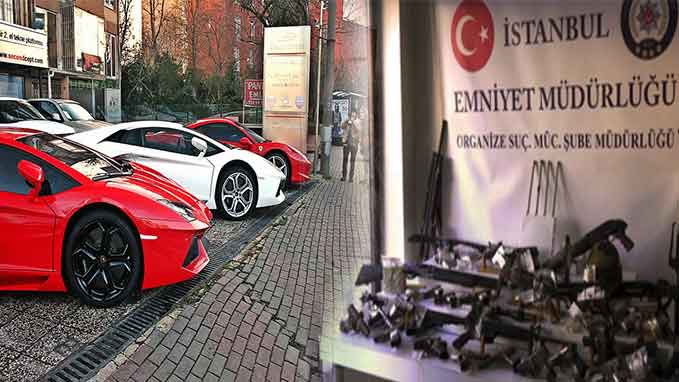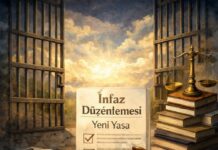Of course, I as always struck by the contrast between the level of disorganization and chaos in Istanbul’s Greater Municipal Police Headquarters, and the actual situation on Turkish streets. The police that I did see on the streets were often the stereotypical cops of “developing” countries: pot-bellied, cap askew, cigarette dangling from lips, looking for unaware violators to pry fines out of (which would be duly pocketed). And I could see the connection between the chaos in the Foreigners’ Desk and the cops on the street. But normal life on Istanbul’s streets was still calm, and people generally did what they wanted. Traffic rules were observed by no one. Totally unregulated street vendors selling everything from chickpea pilav and simit (sesame bread rings) to pirated books and DVDs were common (1). As long as I’ve been here, for example, people have kept drinking alcohol openly out of bottles on Istanbul’s streets (and yes, they still do, despite some changes in the alcohol laws). That particular point always amazed me because, in my region of the U.S., drinking alcohol on public streets is strictly prohibited, and violators receive fines and even jail time.
One other aspect of Turkish streets did always catch my attention, though, and that was simply the general condition of the pavements, the sidewalks, and other infrastructural elements. Generally, all such things were badly maintained. Sidewalks, for example, were — and are — commonly in such bad condition that I prefer to walk in the street. Electricity cuts were also a common feature of life in Istanbul. In fact, I was astonished to learn that the local governments often required neighborhood residents to pay out-of-pocket for improvements like sidewalks or gas lines. The portion of the infrastructure in front of a house or building was typically paid for by the residents therein. Whether this was just corruption in the neighborhoods that my interlocutors lived in, or a much more widespread practice, I still don’t know exactly.
Only about eight, maybe nine, years ago did I finally begin to make connections between the general topic of Turkish state institutions and the situation on the streets. The key to this understanding was the realization that Turkish institutions were actually weak, and that this was the reason why there was both chaos in the Foreigners’ Desk and relative freedom on Istanbul’s streets. Simply, the Turkish police forces did not have the organizational capacity to enforce the law, at the street level, on a consistent daily basis. Their staff was poorly-trained and badly-paid, their officers unmotivated, under-manned, and unprofessional. German or American state institutions, on the other hand, have the capacity to put highly-professional officers on the street and in numbers sufficient to maintain peace for society. What I experienced in Germany was the fact that the German state chooses not to engage in the same street-level enforcement that exists in the U.S. But that is a consequence of institutional decision-making and organizational capacity. This was not true for Turkish institutions.
For example, another pet topic of mine that is closely related to the strength of state institutions, and which I explain to any poor soul who indicates a willingness to listen, is the Turkish mafia. Even though the situation on the streets was largely calm and free of violence, Turkish society was known to be densely populated by crime syndicates, i.e. mafias. I long ago came to understand that local communities all over the country had their own mafias, many of which are not really seen as mafias by the region’s inhabitants, but are actually very much so. Even in the first years I was in Turkey, through my contacts with lawyer acquaintances, I learned how serious a problem organized crime was. And that was not even to wade into the much deeper problem of Turkish organized crime’s state connections, which were illustrated by the infamous Susurluk car accident in 1997 (2).
As long as I’ve lived in Turkey kneecappings have been a common news item, and not only in Istanbul. News reports of kneecappings trickle in from most anywhere across the country once or twice per month. From night club singers to café owners, victims range across the possible spectrum of mafia targets. From time to time this or that mafia network carries out hits on Turkish streets — underground figures are assassinated behind the driver’s wheel while waiting for a light to turn green, or they are simply found slumped over in their car on a country lane.
But a recent news item illustrates well the size of a problem that Turkey has only just begun to deal with. Last month, Istanbul police carried out operations against two organized crime groups (3) that had been murdering each other, the Şahinler and the Sarallar syndicates. According to press reports, the Sarallar syndicate has a membership of 35-40 thousand (4). That’s not a typo. When we see numbers like that, then the massive amounts of contraband routinely confiscated by police (5), the density of luxury automobiles on Istanbul streets, which would not be possible in a truly transparent, well-regulated, and taxed economy (6), the still large “informal” sector of the economy, and the weakness of Turkish state institutions all begin to make sense. The interconnections are clear (to be continued).
NOTES
(1) Over the past ten years the Turkish authorities have cracked down on pirating in a number of different sectors, but especially with regard to intellectual property like books and DVDs, as well as in the clothing sector. Although still possible, it is now much more difficult to find pirated books and/or DVDs on the streets.
(2) https://en.wikipedia.org/wiki/Susurluk_scandal
(3) http://www.milliyet.com.tr/sarallar-ve-sahinler-e-yonelik-gundem-2369245/
(5) http://www.dunya.com/gundem/huzur-turkiye-uygulamasinda-262-bin-kisi-sorgulandi-haberi-341231; http://www.dunya.com/gundem/900-bin-paket-kacak-sigara-ele-gecirildi-haberi-345188; http://www.dunya.com/gundem/istanbulda-huzur-operasyonu-haberi-334676; http://www.cnnturk.com/video/turkiye/1-bucuk-milyon-dolarlik-uyusturucu-boyle-yakalandi
(6) And these cars are not just BMWs or Audis; some of the most expensive automobiles in the world, such as Ferraris, Lamborghinis, Maseratis or Bentleys are all common sights on Istanbul streets.













